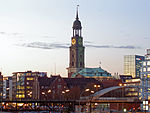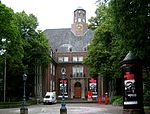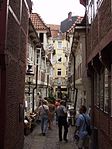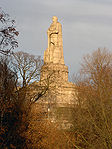Composers Quarter Hamburg

The Composers Quarter Hamburg (German: Komponistenquartier Hamburg) is a gathering of six museums in the Peterstraße in Hamburg-Neustadt, Germany. The associated museums have one or two classical composers as a theme who were born or have lived in the city of Hamburg.The museums are located in restored historical buildings. With the use of multimedia the lives and works of the composers are being cleared. Insight is being given why the composers may still matter in the current era.The quarter is represented by the association with the same name that was founded in 2015. The following list shows the member museums, the composers that are themed and the year of establishment: Brahms Museum, Johannes Brahms, 1971 Telemann Museum, Georg Philipp Telemann, 2011 Carl Philipp Emanuel Bach Museum, Carl Philipp Emanuel Bach, 2015 Johann Adolph Hasse Museum, Johann Adolph Hasse, 2015 Gustav Mahler Museum, Gustav Mahler, 2018 Fanny & Felix Mendelssohn Museum, Fanny and Felix Mendelssohn, 2018
Excerpt from the Wikipedia article Composers Quarter Hamburg (License: CC BY-SA 3.0, Authors, Images).Composers Quarter Hamburg
Peterstraße, Hamburg Neustadt
Geographical coordinates (GPS) Address Nearby Places Show on map
Geographical coordinates (GPS)
| Latitude | Longitude |
|---|---|
| N 53.551238888889 ° | E 9.9768694444444 ° |
Address
Peterstraße 35
20355 Hamburg, Neustadt
Germany
Open on Google Maps







